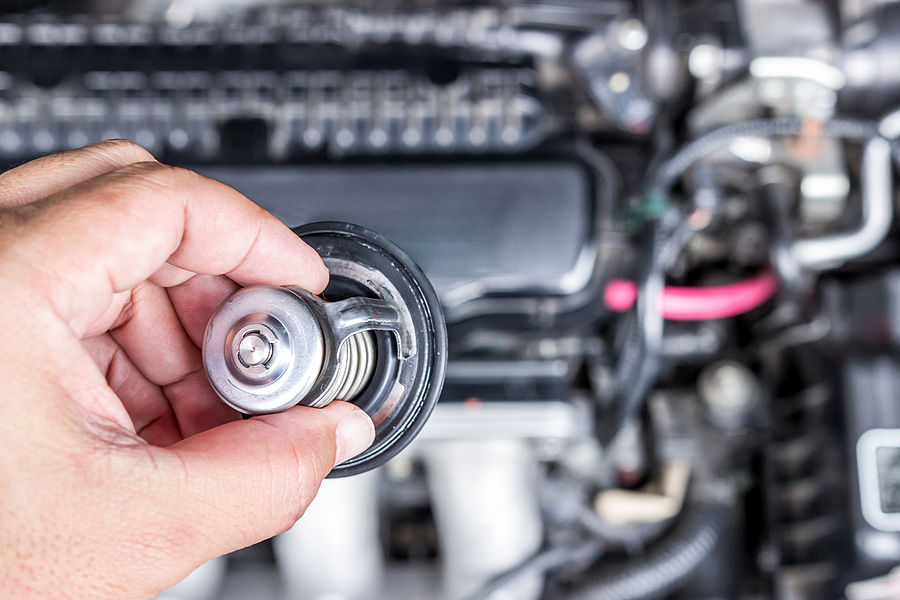As a car owner, understanding the intricate mechanics of your vehicle’s cooling system is crucial. The car thermostat, a seemingly small and innocuous part, plays a monumental role in ensuring your engine operates within its optimum temperature range. Yet, when thermostat issues arise, they can lead to catastrophic consequences for your car’s performance and, potentially, your wallet.
In this comprehensive guide, we will delve into the complexities of car thermostats, common problems, effective repair solutions, and proactive maintenance to keep your engine running smoothly.

Typical Car Thermostat Problems
Picture this: You’re driving on a sweltering summer day, and suddenly your car’s temperature gauge spikes into the red zone. Or you notice that your heater is blowing cold air despite cries of protest from the engine. These are classic signs of a malfunctioning thermostat, an event that no car owner wishes to experience. The car thermostat is the guardian of your engine’s temperature, preventing overheating and maintaining efficiency. Let’s unravel the world of car thermostat issues and learn how to tackle them with confidence.
The 101 on Car Thermostats
Your car’s thermostat acts as a gateway to the engine’s cooling system, regulating the flow of coolant to manage temperature. When you start your car, the thermostat remains closed, allowing the engine to warm up quickly. Once the optimal temperature is reached, typically around 195°F, the thermostat opens to allow coolant to circulate, cooling the engine. This cycle repeats to maintain a consistent temperature.
Function and Role in the Car’s Cooling System
The thermostat is an essential component of a car’s cooling system. It ensures the engine reaches operating temperature quickly for efficiency and emissions control. It also aides in maintaining proper operating temperature, preventing the engine from overheating or operating too cool, which can lead to poor performance and increased fuel consumption.
Types of Thermostats in Vehicles
Automotive thermostats come in various designs, but the most common types are the poppet valve and the wax pellet style. Poppet valve thermostats have a disk that blocks the passage of coolant when closed, while wax pellet thermostats use the expansion of a wax-filled cylinder to mechanically open the valve.
Common Car Thermostat Problems
Thermostat issues can manifest in several ways, each a telltale sign of potential problems within your vehicle’s cooling system. Understanding these symptoms can save you time and money in identifying and addressing the issue promptly.
Overheating Issues
An overheated engine can spell disaster, potentially leading to a warped head gasket, a cracked cylinder head, or even a damaged engine block. A faulty thermostat may be to blame if your car’s temperature gauge suddenly climbs into the red, signaling that the coolant is not circulating properly to cool the engine.
Engine Temperature Fluctuations
If your temperature gauge seems erratic, climbing and dropping without rhyme or reason, it could indicate a thermostat that is not opening and closing at the correct temperatures. This inconsistency can lead to poor engine performance and reduced fuel efficiency.
Coolant Leaks
Thermostat housing leaks are another common issue and can often be traced back to a damaged gasket or a crack in the housing itself. Leaks can lead to a drop in system pressure, compromising the efficiency of the cooling system and potentially causing overheating.
Car Thermostat Repair
Identifying a faulty thermostat is the first step, but knowing how to repair or replace it is equally important. Whether you opt for a do-it-yourself (DIY) approach or seek professional assistance, timely intervention is key to keeping your cooling system at its best.
DIY vs. Professional Repair Options
Replacing a thermostat can be a relatively simple task for those comfortable with basic car maintenance, involving the removal and replacement of the thermostat and gasket. However, if you’re not confident in your automotive skills, seeking the expertise of a professional is always an option to consider.
Replacement and Installation Process
For those ready to take on the task, start by draining the coolant, removing the thermostat housing, taking note of the thermostat’s orientation, replacing the thermostat and gasket, and then reassembling the housing and refilling the coolant. It’s essential to consult your vehicle’s service manual for specific instructions and torque specifications.
Preventative Maintenance Tips
The key to avoiding thermostat issues is regular maintenance. Here are some preventative measures to keep your thermostat and cooling system in top condition.
How to Maintain the Car Thermostat for Longevity
Regularly inspecting your thermostat for signs of wear or corrosion can help prevent future problems. Look for coolant leaks around the thermostat housing and ensure proper coolant levels and condition. If your vehicle is approaching the manufacturer’s recommended thermostat replacement interval, it’s wise to schedule a replacement.
Regular Checks and Maintenance Schedule
Check the condition of your thermostat as part of your regular engine check-up. Replace the thermostat and coolant according to the maintenance schedule outlined in your vehicle’s service manual, typically every 60,000 to 100,000 miles.
In Summary
The car thermostat often works behind the scenes, ensuring your engine remains at optimal temperature. By recognizing the symptoms of thermostat problems, understanding its function, and executing timely repairs, you can avoid costly engine damage and maintain your vehicle’s efficiency. Be proactive in maintaining your car’s cooling system and remember that the thermostat is a small part with a big job. Take care of it, and it will take care of your engine for many miles to come.
Whether it’s knowing the signs of a faulty thermostat or understanding the replacement process, being informed can make all the difference. Contact Northeast Auto Service at 317-475-1846 for professional radiator and exhaust repair service in Indianapolis, Indiana. Request a free estimate, or schedule service, today.
Related Posts:
Recommended Maintenance for a Car That Has Not Been Driven in a While
Why is My Car Engine Overheating?
Top 4 Signs Your Car Needs Radiator Repair
